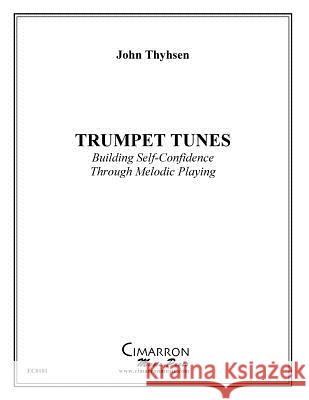Trumpet Tunes: Building Self-Confidence Through Melodic Playing » książka
Trumpet Tunes: Building Self-Confidence Through Melodic Playing
ISBN-13: 9781530104468 / Angielski / Miękka / 2016 / 32 str.
These melodies are meant to encourage the performer to improve: 1. Playing consistently with stability 2. Embouchure (muscle control) set-up 3. Concentration 4. Aural perception (learn placement of 13 notes used in Western music scale) 5. Eye-ear-finger-breath-co-ordination These melodies are meant to help each person to: 1. Understand that he/she is the instrument from which music evolves 2. Realize how much co-ordination can be achieved or maintained by progressing through the melodies 3. Re-establish self-confidence after a challenging rehearsal 4. Re-establish the basic overall mental and physical set-up that may have been thrown off 5. Have fun playing, and hear how one would like to sound all the time These melodies can be played in any order. Remember - the secret to playing beautifully is knowing when not to play Rest in between melodies. Melodies are meant to encourage and challenge the player through relaxed and controlled conditions. While the melodies might look easy, they are meant to be played slowly and under control (even those that have 16th's and 32nd's). None of the melodies with wide intervals should be played fast at first. Only when ease of playing has been established with good response should the performer try to play these melodies fast for flexibility purposes. Dynamics are relative. Play all melodies at the dynamic level that you sound the best and with the best response. All of these melodies will become more effective after: 1. The player has been informed about a good embouchure set-up 2. The control of breath, fingers, embouchure muscles, mouth cavity and air projection has taken place Results: Good response Pleasing sound Improved ensemble performance Better student/teacher relationship Increased self-respect Greater concern for musical expression More fun in playing











